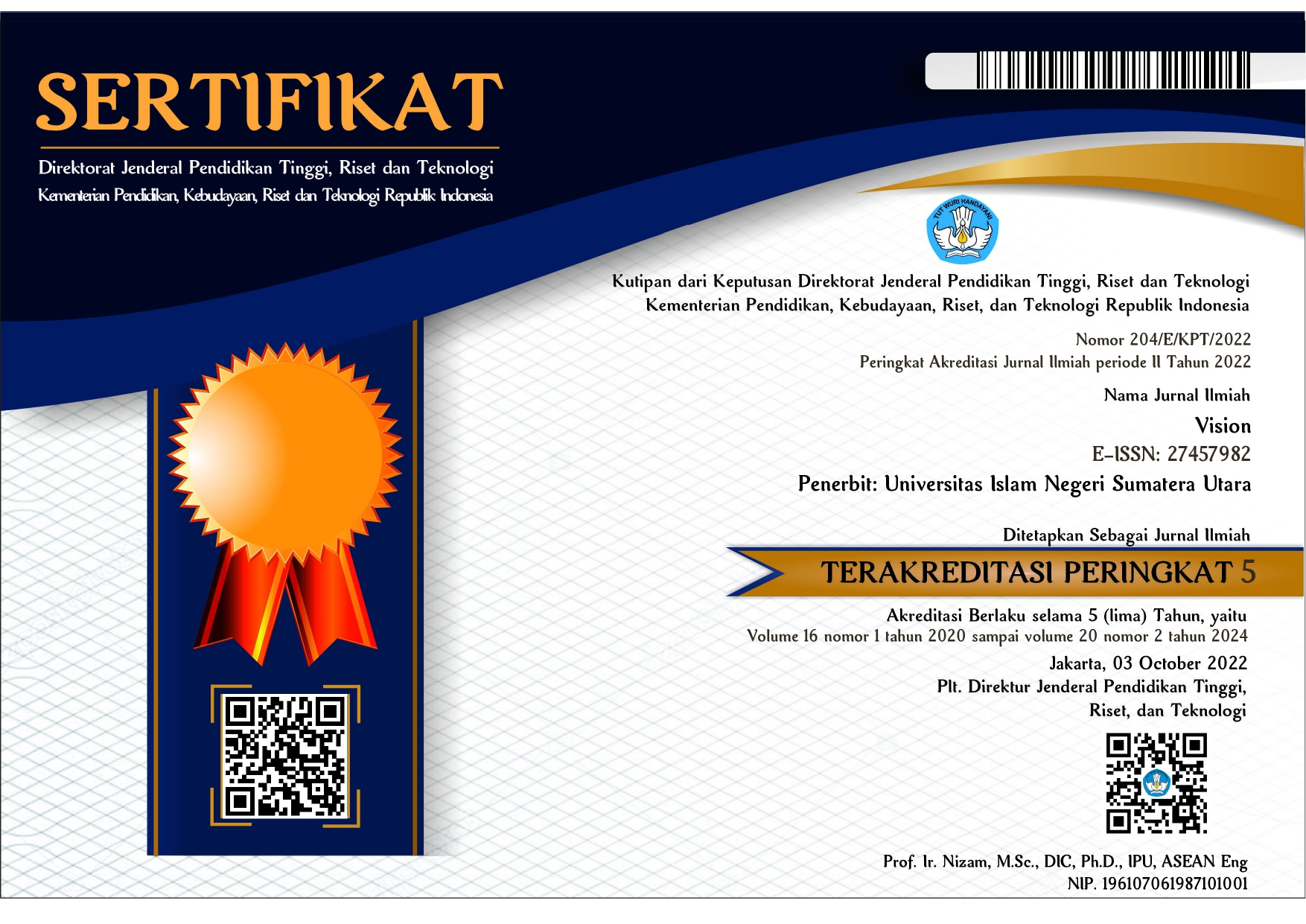PICTURE WORDS INDUCTIVE MODEL FOR YOUNG LEARNER IN IMPROVING ENGLISH VOCABULARY FOR INDONESIAN STUDENTS AT SD SWASTA PELANGI MEDAN
Abstract
Full Text:
PDFReferences
Barani, G., Mazandarani, O., & Rezaie, S. H. S. (2010). The Effect Of Application Of Picture Into Picture Audio- Visual Aids On Vocabulary Learning Of Young Iranian ELF Learners. Procedia - Social and Behavioral Sciences, 2(2), 5362– 5369. https://doi.org/10.1016/j.sbspro.2010.03.874
Best, J. W., & Kahn, J. V. (2006). Research In Education (10th ed.). USA: Pearson
Bryman, A. & Bell, E. (2007). Business Research Methods. New York: Oxford University Press.
Brysbaert M, Stevens M, Mandera P and Keuleers E (2016). How Many Words Do We Know? Practical Estimates of Vocabulary Size Dependent on Word Definition, the Degree of Language Input and the Participant’s Age. Front. Psychol. 7:1116. doi: 10.3389/fpsyg.2016.01116.
Cameron, L. (2001). Teaching English to Young Learners. New York, NY: Cambridge University Press
Coffman, T. (2009). Engaging Students Through Inquiry-Oriented Learning and Teaching. USA: Rowman & Littlefield Education
Emirmustafaoğlu, A., & Gökmen, D. U. (2015). The Effects of Picture vs. Translation Mediated Instruction on L2 Vocabulary Learning. Procedia - Social and Behavioral Sciences, 199, 357–362. https://doi.org/10.1016/j.sbspro.2015.07.559
Ghaedi, R., & Shahrokhi, M. (2016). The Impact of Visualization and Verbalization Techniques on Vocabulary Learning of Iranian High School EFL learners: A Gender Perspective. Ampersand, 3, 32–42. https://doi.org/10.1016/j.amper.2016.03.001
Hiebert, Elfrieda H and L. Kamil. (2005). Teaching and Learning Vocabulary. Bringing Research to Practice. Mahwah New Jersey: Lawrence Erlbaum Associates.
Joan H. Lee (2011). What does txting do 2 Language: The Influences of exposure to Messaging and print media on acceptability constraints (PDF) (M. A.). University of Calgary. Retrieved 20 November 2013. Lay summary.
Joyce, B. & Weil, M. and Calhoun, E. (2008). Models of teaching, 8th ed. Englewood Cliffs, NJ: Prentice-Hall. (there is now a 9th, 2014 edition)
Leung, L. (2015). Validity, Reliability, and Generalizability in Qualitative Research. J Family Med Prim Care. 2015 Jul-Sep; 4(3): 324–327.
Kelley, K., Clarke, B., Brown, V. and Sitzia, J. (2003). Good Practice in the Conduct and Reporting of Survey Research. International Journal for Quality in Health Care, 15, 261-266. http://dx.doi.org/10.1093/intqhc/mzg031
Nation, I. S. P. (2011). Learning Vocabulary in Another Language. Cambridge: Cambridge University Press.
Rakchanok (2014). Strategies for Dealing with Vocabulary Learning. Problems by Thai University Students. Faculty of Liberal Arts, Khon Kaen University, Nong Khai Campus, Nong Khai : Thailand
DOI: http://dx.doi.org/10.30829/vis.v16i1.709
Refbacks
- There are currently no refbacks.
Copyright (c) 2020 VISION
















